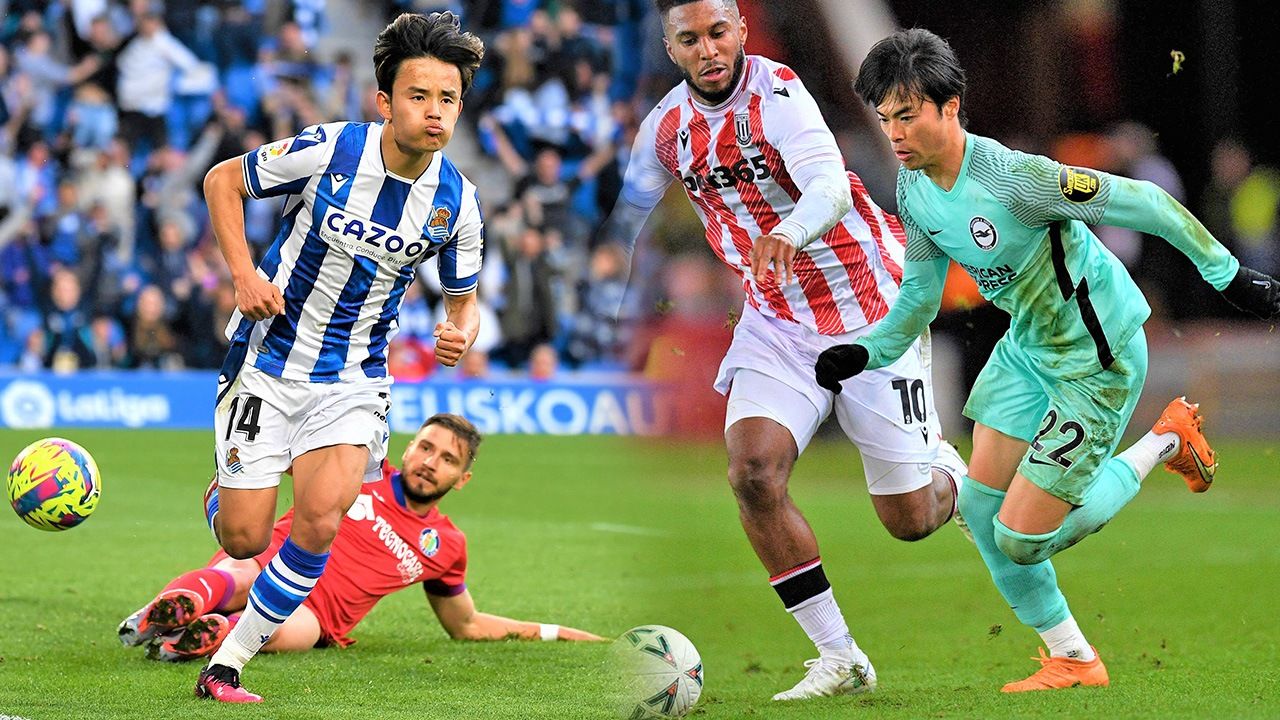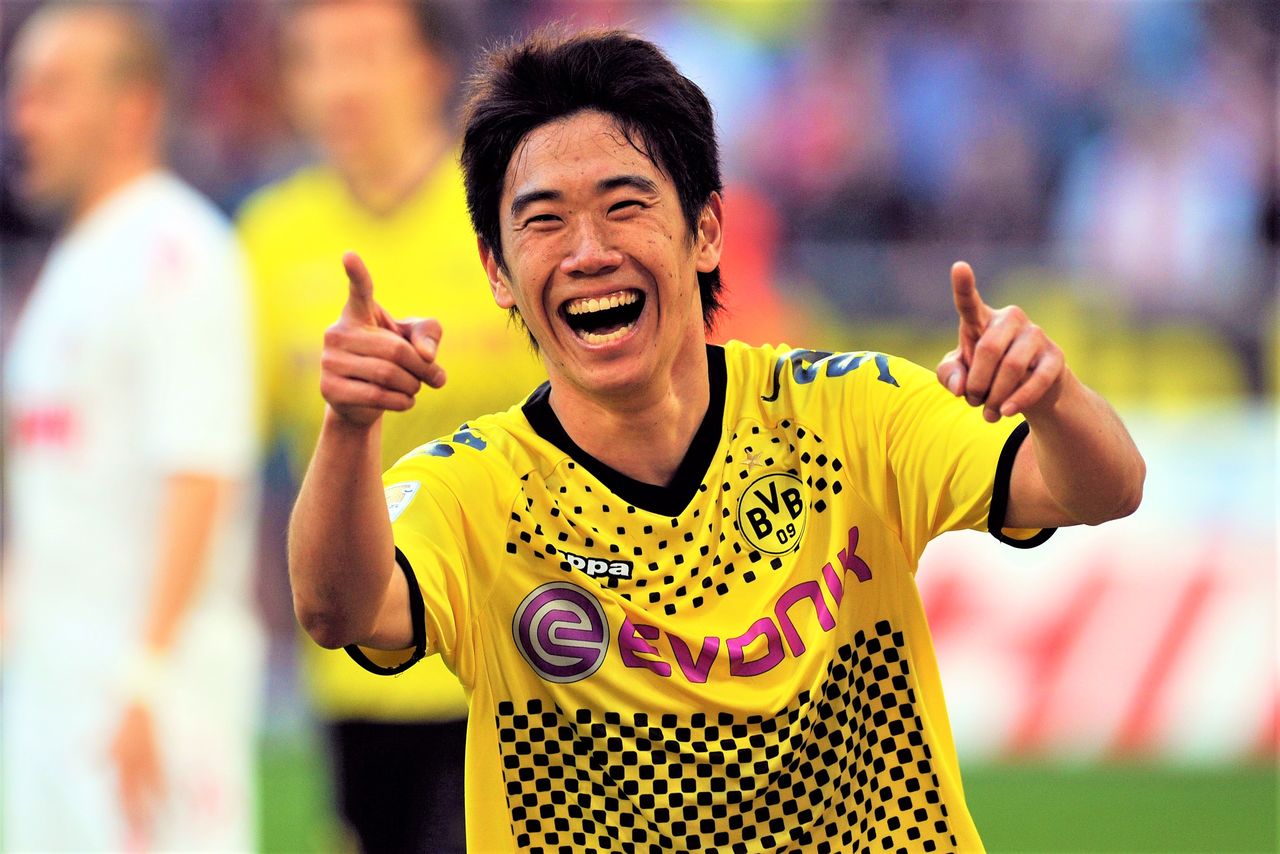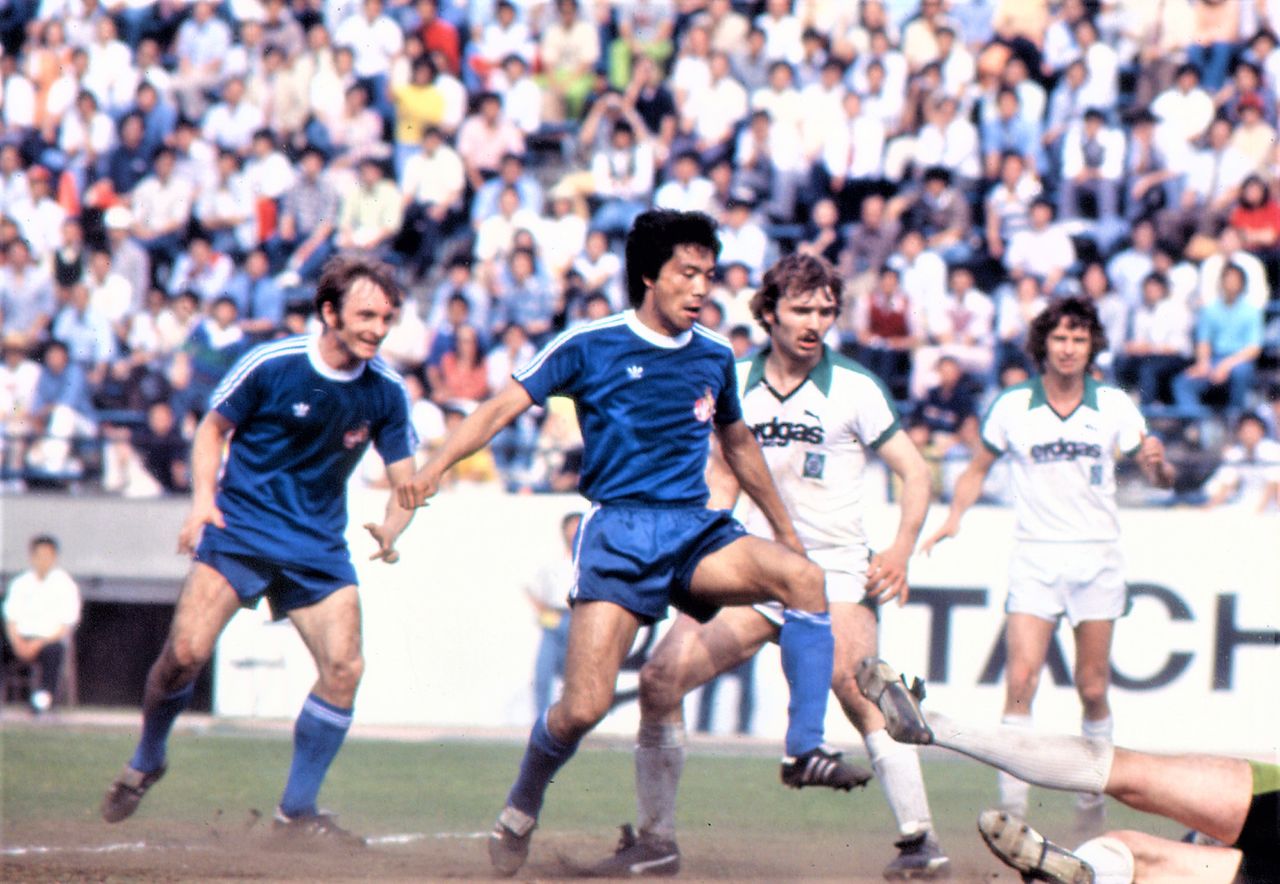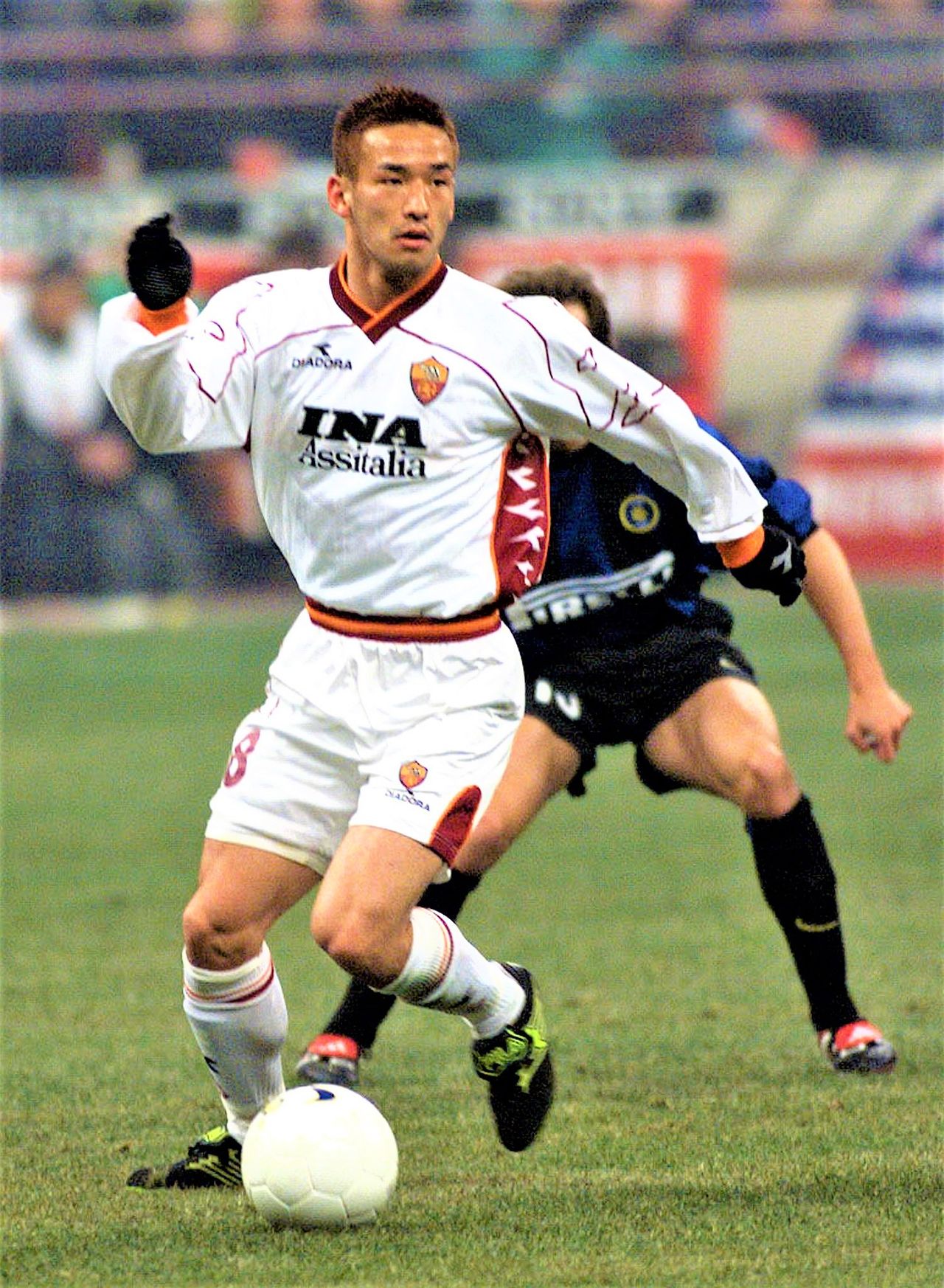
Football Dreams: Growing Number of Japanese Soccer Players Set Sights on Europe
Sports- English
- 日本語
- 简体字
- 繁體字
- Français
- Español
- العربية
- Русский
Soccer Exports
At last year’s World Cup in Qatar, Japanese men’s national soccer team manager Moriyasu Hajime looked to Europe to fill his squad. Of the 26-man roster, 22 currently or at one time played for clubs on the continent. Moriyasu’s strategy was a resounding success. Competing in the “group of death,” the Japanese team surpassed all expectations by downing former champions Germany and Spain to earn its fifth appearance in the round of 16, where it held its own against perennial title contender Croatia before a disappointing loss on penalties.
This reliance on players with European experience made Japan something of an outlier compared to other Asian competitors at the tournament. Iran, for instance, tapped 13 players based in Europe, South Korea 7, and Saudi Arabia none at all. Even Australia, with its strong ties to British soccer, called up just 15 of its internationals playing for European clubs.
Japan’s shift to Europe-based players has been a gradual one. When it made its World Cup debut in France in 1998, the team consisted wholly of players from the domestic J. League. When Japan cohosted the tournament with South Korea in 2002, four on the squad played in Europe. This number would remain more or less steady over the next several tournaments. At the 2014 finals in Brazil, though, it shot up to 12, increasing further to 16 for the team’s campaign in Russia in 2018. As things stand now, a spot at a European club is almost a prerequisite for a player to make the national team.
Competition is fierce, too, with upward of 100 Japanese playing at first-division teams in Europe. This includes the likes of Kubo Takefusa, Kamada Daichi, and Mitoma Kaoru at clubs in the big five European leagues in England, France, Germany, Italy, and Spain as well as such stars as Maeda Daizen and Ueda Ayase who have made a splash in top-flight competitions in other countries. Japanese footballers have been heading to Europe at a growing pace over the past 10 years, turning Japan into the leading exporter of soccer talent in Asia and even drawing comparisons among some circles with Brazil and nations in Africa that have long sent players to teams on the continent.
The Kagawa Effect
Without question, Japan’s success in developing domestic talent has helped fuel the current demand in Europe for Japanese players. However, early on, the road was extremely steep, requiring footballers to first prove their worth with long stints in the J. League. This changed with Kagawa Shinji, who turned heads as a stand-out youth player at second-tier club Cerezo Osaka.
In 2010, Kagawa was called up to the Japanese national team but failed to make the final cut for that year’s World Cup in South Africa. Nevertheless, the 21-year-old midfielder drew the attention of German Bundesliga side Borussia Dortmund with his play, including claiming top scorer honors in 2009 to help Cerezo win promotion to the first division. At the end of the season, a special agreement saw Kagawa transfer to Dortmund for a modest fee of €350,000.

Kagawa Shinji takes the field for Dortmund on March 25, 2012. (© AFP/Jiji)
I visited Dortmund’s preseason training camp in the outskirts of Graz, Austria, shortly after Kagawa moved to the club and was surprised at how young and unexperienced the squad seemed, an impression strengthened by the absence of players who had participated in the World Cup. Even to an untrained eye, Kagawa was heads and shoulders above his teammates, both in the quality of his play and his technical prowess. His fellow players struggled to anticipate his carefully timed runs or position themselves to receive his pin-point passes. Although Kagawa let his disappointment in his performance show, saying after the training session that “I just need a little more time to settle in,” I had no doubt that he would succeed in Europe.
Just as I had anticipated, Kagawa found his footing. He was instrumental in Dortmund’s back-to-back Bundesliga titles, in 2011 and 2012, and his standout second season with the club saw him named to the league’s all-star team, the Bundesliga XI. His performance brought Manchester United calling, and after two years, Kagawa bid farewell to Dortmund and moved to the powerhouse Premier League side.
After Kagawa, German clubs started to take notice of Japanese players, discovering in Japan an abundance of top-notch footballers with the technical skills, game sense, and a strong desire to win. What is more, the players were a steal, with transfers fees typically being far below the going rate for European leagues.
Around the same time that Kagawa made his move to the Bundesliga, other Japanese internationals like Honda Keisuke, Nagatomo Yūto, Okazaki Shinji, and Hasebe Makoto were also making an impact at top clubs in Germany and elsewhere, fueling further demand for players from Japan.
The flood of Japanese soccer talent to Europe suggests a dramatic uptick in the level of play in Japan, but Philippe Troussier, who managed the men’s national team from 1998 to 2002, says nothing could be further from the case. He instead ascribes the situation to European clubs being overly focused on snapping up star players from Brazil, Argentina, and African countries, a bias that prevented them from capitalizing on the pool of talent available in Japan. He says that following Japan’s first appearance at the World Cup in 1998, it took a decade for teams to warm to the idea of signing Japanese internationals.
Pioneering Career
Japan’s Europe-based players have a forebearer in Okudera Yasuhiko, who became the first Japanese footballer to join a European team when he signed with West German side FC Cologne in 1977. Okudera had made a name for himself as a midfielder for Furukawa Electric (now JEF United Ichihara Chiba) of Japan’s corporate soccer league and as a member of the Japanese national team. During a trip to Germany to train with Bundesliga clubs, he caught the eye of legendary Cologne manager Hennes Weisweiler, who offered him a contract.
Although he struggled to adjust to his new environment, Okudera eventually found his footing, helping the team win its second-ever league championship in 1977. He was also pivotal in the team’s campaign at the 1978 European Championship (now the UEFA Champions League), including scoring a dramatic tying goal against British First Division side Nottingham Forest in the first leg of the semifinals. He would spend a total of nine seasons in Germany, including stints at Hertha BSC and Werder Bremen, where he won a second Bundesliga title.

Okudera Yasuhiko (at center) makes his return to Japan with Cologne in a Japan Cup (now Kirin Cup) match at the National Stadium in Tokyo on May 27, 1978. (© Jiji)
Two others followed in Okudera’s footsteps in the 1980s, Ozaki Kazuo and Kazama Yahiro. The pair spent several seasons in Germany, but arguably were not as successful as their predecessor. Their return to Japan marked the beginning of a long dry spell of Japanese players heading overseas. Aside from Miura Kazuyoshi, who quit school and traveled to Brazil at the age of 15 intent on becoming a professional player, no Japanese footballer of note went abroad until Nakata Hidetoshi, buoyed by his performance at the World Cup in France, moved to Perugia of Italy’s Seria A in 1998.
The situation was not as desperate as it seemed, though. The early 1990s heralded the start of a new era for Japanese domestic soccer. The J. League focused attention on the sport when it launched in 1993, with teams bringing in international stars like Zico, Gary Lineker, Pierre Littbarski, and Dragan Stojkovic to woo fans and raise the level of play. Governing body Japan Football Association made youth development a priority, a decision that paid immediate dividends with Japan putting in a strong showing at the 1994 AFC Youth Championships to earn its first-ever trip to the World Youth Championship (now the U-20 World Cup) held the following year, where it reached the quarterfinals.
Despite these encouraging signs of progress, few if any Japanese players during this era were at a level that would draw the attention of clubs in Europe. In fact, Japanese soccer fans at the time considered the top-flight European leagues as being far beyond the reach of domestic stars. The lone exception was Nakata, who was admired for his world-class skills and game sense.

Nakata Hidetoshi after moving to powerhouse Roma plays in a match against Milan on January 30, 2001. (© AFP/Jiji)
As the first wave of Japanese internationals began to head abroad in the early 2000s, new issues emerged that were wholly separate from soccer ability. Having never stepped outside the comforts of their native culture, many struggled to adjust to the demands of living and playing overseas, particularly the need to express themselves in foreign languages. Some were able to circumvent such hurdles, such as Nakamura Shunsuke, who won the full confidence of his manager as he thrived at Scottish club Celtic, and Matsui Daisuke and Kagawa, both of whom were able to express their talents as part of young, close-knit teams. Players who were less outgoing or had never lived on their own, however, had a harder time adapting.

Honda Keisuke plays for AC Milan in a match against Sampdoria on February 23, 2014, in Genoa. The midfielder’s signing with the club, one of the biggest in European soccer, was major news in Japan. (© AFP/Jiji)
Today, players consider moves to Europe in a vastly different light. The success of stars like Kagawa, Honda, and others have made it a less daunting prospect, giving hopefuls greater confidence that they can succeed in the challenging environment. Many players now lay the groundwork for living and playing overseas by taking classes to boost their communication skills in English and other languages.
There was a fear that the level of the J. League would suffer as more and more of its stars headed abroad, but the opposite has proven to be the case. Japanese teams are regular contenders in the AFC Champions League, the premier club competition in Asia, with Gamba Osaka, Kashima Antlers, and Urawa Reds having claimed the title, the latter a total of three times.
One can expect to see more J. League players moving to Europe and elsewhere in the coming years, which will drive demand up even further for Japanese soccer talent, raising the level of the sport to ever higher heights.
(Originally published in Japanese. Banner photos: Kubo Takefusa (left) plays following his move to Spanish La Liga club Real Sociedad and Mitoma Kaoru moves the ball for Brighton of the Premier League. © AFP/Jiji.)